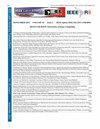Agreement analysis of heart rate variability indices at two different sampling rates for monitoring applications.
IF 1.3
4区 工程技术
Q3 COMPUTER SCIENCE, INFORMATION SYSTEMS
引用次数: 0
Abstract
Beat-to-beat variations in heart rate lead to heart rate variability (HRV), analysed from electrocardiogram or photoplethysmography signals, forming a non-equispaced time series of beats, which requires a resampling of 3 Hz or 4 Hz, for analysis in the frequency domain. HRV is considered a biomarker, predictor of the evolution of diseases in intensive care units (ICU). To enhance these HRV studies, it is necessary to monitor the patients health using portable devices, from admission to the ICU until discharge from it and subsequently at home. This requires monitoring devices that can minimise energy consumption and data storage. Reducing the sampling frequency in HRV can reduce energy consumption, computing power and to limite data storage. Therefore, the objective of this work is to prove that a series resampled at 1 Hz allows obtaining HRV indices, equivalent to a 3 Hz. Through concordance analysis, using a database of subjects with pharmacological autonomic blockade and postural changes. The results show equivalences between the indices, standard deviation (SDNN), total spectral power (PT), low frequency (LF) and long-term variability (SD2) and agree with those reported as predictors. This study has limitations, since only a small number of young men participated. Future studies should consider this. The reduction of SDNN, PT, LF values would be predictors of mortality in hospitals, so the equivalence found from series with 1Hz resampling, would allow the use of portable devices with optimized performance, to monitor the evolution of the disease in patients in ICUs.心率变异性指标在两种不同采样率下的一致性分析。
心率的搏动变化导致心率变异性(HRV),从心电图或光容积脉搏图信号分析,形成一个非均匀的时间序列的心跳,这需要重新采样3赫兹或4赫兹,在频域进行分析。HRV被认为是一种生物标志物,是重症监护病房(ICU)疾病演变的预测因子。为了加强这些HRV研究,有必要使用便携式设备监测患者的健康状况,从进入ICU到出院以及随后在家中。这就需要能够将能耗和数据存储最小化的监控设备。在HRV中降低采样频率可以降低能耗、计算能力和限制数据存储。因此,这项工作的目的是证明在1hz重采样的一系列允许获得HRV指数,相当于3hz。通过一致性分析,使用药理学自主神经阻滞和体位改变受试者的数据库。结果表明,这些指标、标准差(SDNN)、总谱功率(PT)、低频(LF)和长期变率(SD2)之间是等价的,并与报道的预测指标一致。这项研究有局限性,因为只有少数年轻男性参与。未来的研究应该考虑到这一点。SDNN、PT、LF值的降低将是医院死亡率的预测指标,因此,从1Hz重采样的序列中发现的等效性,将允许使用性能优化的便携式设备,监测icu患者的疾病演变。
本文章由计算机程序翻译,如有差异,请以英文原文为准。
求助全文
约1分钟内获得全文
求助全文
来源期刊

IEEE Latin America Transactions
COMPUTER SCIENCE, INFORMATION SYSTEMS-ENGINEERING, ELECTRICAL & ELECTRONIC
CiteScore
3.50
自引率
7.70%
发文量
192
审稿时长
3-8 weeks
期刊介绍:
IEEE Latin America Transactions (IEEE LATAM) is an interdisciplinary journal focused on the dissemination of original and quality research papers / review articles in Spanish and Portuguese of emerging topics in three main areas: Computing, Electric Energy and Electronics. Some of the sub-areas of the journal are, but not limited to: Automatic control, communications, instrumentation, artificial intelligence, power and industrial electronics, fault diagnosis and detection, transportation electrification, internet of things, electrical machines, circuits and systems, biomedicine and biomedical / haptic applications, secure communications, robotics, sensors and actuators, computer networks, smart grids, among others.
 求助内容:
求助内容: 应助结果提醒方式:
应助结果提醒方式:


